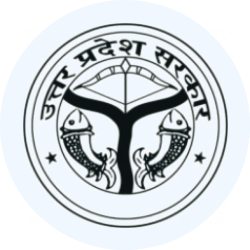Contribution of Women to National Development is of Considerable Significance but without Reward | Course for UPPSC Preparation - UPPSC (UP) PDF Download
Contribution of Women to National Development is of Considerable Significance but without Reward
structure
(1) Opening — Contribution to mainstream national development activi-ty has largely remained invi-sible.
(2) Body — Burden on women.
— Inferior work opportunity.
— Women’s open and organi-sed participation in labour markets.
— Faulty survey of women labour.
— Do not get the real benefit.
— Self-employed women.
— Strenuous and low paid women workers in agricul-ture and building constru-ction sectors.
— Unfavourable and discrimin-atory conditions in govern-ment enterprises.
— Organised industrial sector and women.
— The real contribution of women.
(3) Closing — Our country has legislation which are sympathetic to women workers. Communi-cation system debarred them from the opportunities available.
The contribution of women to national development - in the current context and its potential is of considerable significance, Indian women's involvement in national progress at all levels - social, economic, political - is an indisputable reality though the degree of this involvement has varied from time to time. However, women's contribution to mainstream national developmental activity has largely remained invisible, and thus largely unrecognized. Consequently, the need for skill development among women, through education and training, have remained unmet.
Job markets and working conditions have been attuned and evolved to suit the requirements of male workers : women, placed in different social situations and with added burden of family responsibility, have had to struggle against unfavourable conditions., first for creating a place for themselves in the job market and then to sustain their status and to further improve their skills.
The consequences of such a situation are manifest in fewer and inferior work opportunities for women, adverse effect of dual responsibility on their health, slow progress in skill-improvement and perpetual economic suppression. According to world economic researchers and the International Labour Organisation's findings, women's contribution to national economies, whether in informal sector of industry and agricultural operations or in formal sectors, varies between 50 to 80 per cent, even though they are generally not among the top executives and policy planners who give direction and shape to economic activity, they are among the baseline, hard-core workers who sustain economies. They provide extensive labour force in homes, in agriculture and in industry, specially the unorganized sector, and are responsible in no small way, for the functioning and growth of national economies. And yet, being largely unorganized and unrecognized groups, their contribution is not noted and the return for their labour is minimal. Women are among the most exploited and depressed sections of world's workers.
This situation of women in the unorganized sector of economic activity is particularly relevant in the Indian context where social and economic practices long in use, have discouraged women's open and organized participation in labour markets. In fact where women are concerned "worker" assumes a different definition and families in poverty while unhesitating to push their women folks to 18 hours work schedules, both inside and outside home, would still insist their women are not "workers." According to them, women are just housewives or "helpers" in family occupations. This is considered so even when almost thirty percent of poorer households, specially in rural areas, ware headed by women who are the bread-winner of their families.
The same attitudes and concepts are reflected in official records and data on which national policies are based. It is an obvious fact that majority of rural women, barring insignificant proportion of families with larger land holdings, labour not just in homes and provide life-sustaining services, but, work also in fields either as self-employed cultivators or wage workers. These rural women constitute 85 percent of our female population. Yet census reports, national sample surveys, labour documents etc., have all, over the years, put the proportion of women in the national labour force at between 14 to 20 percent. The consequences of such ratings is non-recognition of women as economically productive citizens which in turn lowers their social status.
Unless they are recognized as economic assets, as productive workers and provided training and educational opportunities, their participation and contribution in national development will be only partial which is a loss to women as a section and to the nation as a whole.
There has been a phenomenal growth in industries - specially consumer industries - in recent years. Many of these industries give out subcontracts for semi-finished products. Female labour which is cheap and readily available has been extensively employed on casual and piece-rate basis by contractors as also industrial units themselves. Production in many larger industries in the formal sector thus depends heavily on casual female labour engaged in ancillary units which provide essential components for the raw; over a period of experience they pick up skills. Yet they do not get the benefits enjoyed by permanent and skilled or even semi-skilled labour. They have no job security and are doled out work from day-to-day and are totally at the mercy of the contractor or middle man. The wages are low and not standardized and except for their own acumen and self-learning they have no way of improving their skills and enhancing their earning capacity.
Self-employed women also include petty traders, vendors, crafts workers, small shopkeep
ers, etc. In rural areas, where a fairly large number of women are engaged in cottage industries they suffer from lack of financial support, marketing facilities and again, training to improve their skills. Officially loan facilities have been provided for such small entrepreneurs but financial and banking institutions discriminate against women loan seekers as generally do not own assets that can be offered as loan security. Marketing, accounting etc., are too complicated processes for these unlettered producers.
One of the problems in the way of rural development efforts is that cottage industries do not bring adequate financial return to the villagers; we have not realized fully that unless women who are engaged in these industries are trained in better production methods and guided in marketing, economic well-being of rural areas cannot be ensured.
The agricultural and building construction sectors employ no less than 70 per cent of the total female wage-earners. The work is strenuous and low paid. It is a well recognized fact that better implements and mechanization which make agricultural operations easier, push the women out of these job which, then are taken over by male workers. Women get a chance to come back only when men migrate to urban areas in search of better employment opportunities. In fact women workers are like reserve force drawn upon only in time of need.
Women workers are more visible in urban setting-specially in the service sector though their ratio to men job-holders even here is less than ten percent. The enormous expansion in job market opportunities in industrial, commercial, administrative and tertiary sectors has helped women to increase their absolute number in these areas of employment.
The organized sector in Indian economy comprises of all public sector establishments under Central and State governments as also local bodies, financial bodies and public utilities. The role thus, of state authorities in providing jobs to women in urban areas is significant. However, except in the public sector industries the share of women in total job market has been static. Even in government enterprises, women, more often than not, have to function under unfavourable and discriminatory conditions.
In the organized industrial sector, in factories mines plantations, etc. Women's employment had declined steadily. The reasons for this decline are many and have often been discussed. In plan tations where women constitute almost half the labour force, specially in southern India, they are exploited both economically and sexually. Reformed labour laws provide equal wage for equal work. To circumvent this provision, employees earmark certain jobs exclusively for women and downgrade these in wage order. Often these jobs are more time-consuming, strenuous and hazardous yet these are classified as light and unskilled to justify lower remuneration. While male labour is given in-job training and promoted to supervisory positions, women get no such opportunities.
The post independence era has offered greater opportunities to women in professions and services. As mentioned earlier, though the proportion of women in most areas has remained static, their absolute number has shown appreciable increase. Some areas their absolute number has shown appreciable increase. Some areas where the percentage of women professionals has increased considerably are medicine and health services, teaching and allied educational services and administrative positions in public and private enterprises.
Most of the job-seekers have entered employment market for economic reasons - not merely to make the two ends meet but to improve their living standards and educational facilities for their children. This itself is a major contribution towards national economic advancement. Educated and trained women no longer sit at home and the effort is to combined domestic responsibility with paid jobs. A single income brought by a male member only is found to be inadequate to meet family requirements.
However, these bright spots in the country's changing development scene do not mean that, women, as a rule, have become equal participants in national activity and advancement endeavour. As mentioned earlier, they still have to acquire adequate benefits of education, training and supportive services to enable themselves for a fuller contribution to country's advancement.
In this context, it is often argued that our country has legislation which are sympathetic to women workers. However, it is also a fact that employers, by and large, have been able to circumvent the progressive labour rules. Women workers are overburdened and as per statistics available suffer from poor health, malnutrition and complete lack of leisure. A serious weakness in the efforts for economic advancement of women is lack of effective communication system which would make women aware of the opportunities available and their right of access to these opportunities.
|
113 videos|360 docs|105 tests
|
FAQs on Contribution of Women to National Development is of Considerable Significance but without Reward - Course for UPPSC Preparation - UPPSC (UP)
| 1. What is the contribution of women to national development? |  |
| 2. Why is the contribution of women to national development considered significant? |  |
| 3. What challenges do women face in their journey towards contributing to national development? |  |
| 4. How can women's contributions to national development be recognized and rewarded? |  |
| 5. How can women be further encouraged to contribute to national development? |  |




























